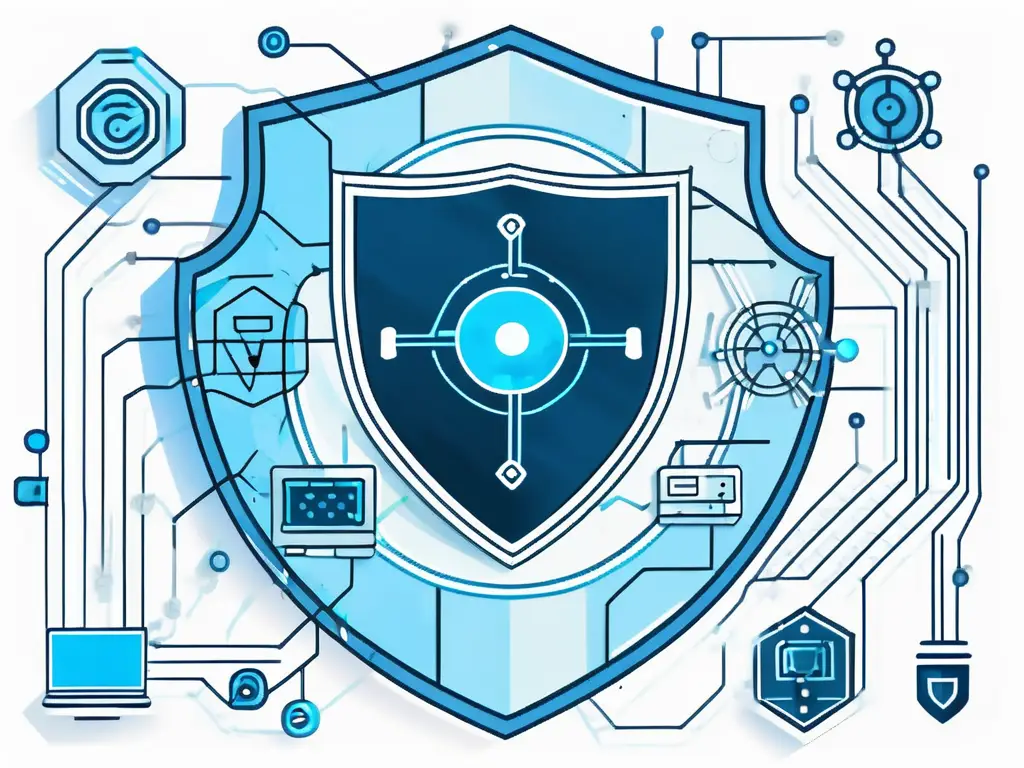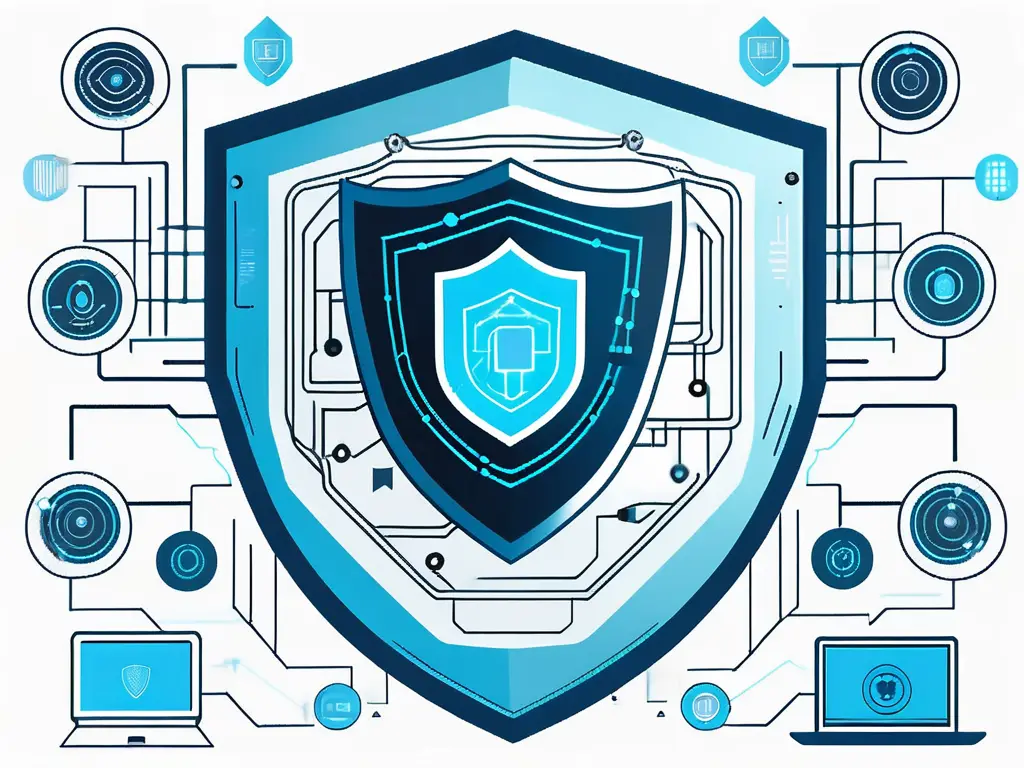Updated October 26, 2024
The healthcare industry has not been untouched in an increasingly interconnected world where technology assists us in all aspects of our lives. Technology integration into medical devices has revolutionized patient care, allowing for more accurate diagnoses and safer treatments. However, with this great advancement comes a significant challenge—cybersecurity risks. The vulnerabilities in medical devices can potentially compromise patient safety and the privacy of sensitive health information. Therefore, understanding and mitigating these risks is of the utmost importance.
Understanding Medical Device Cybersecurity
The Importance of Cybersecurity in Healthcare
Cybersecurity plays a crucial role in healthcare, as medical devices are valuable targets for hackers. These devices, ranging from pacemakers and infusion pumps to radiology machines, are often connected to networks, making them vulnerable to unauthorized access. The consequences of a cybersecurity breach can be dire. Imagine a scenario where a hacker gains control of a pacemaker, potentially putting the patient’s life at risk. The need for robust cybersecurity measures in medical devices cannot be overstated.

In addition to the direct risks posed to patients, cybersecurity breaches in medical devices can have significant financial implications for healthcare organizations. Data breaches can lead to costly legal battles, regulatory fines, and damage to the institution’s reputation. Therefore, investing in cybersecurity measures is not only a matter of patient safety but also a crucial aspect of protecting the financial well-being of healthcare providers.
Key Concepts in Medical Device Cybersecurity
Before delving deeper into the risks and mitigation strategies, one must familiarize oneself with the key concepts of medical device cybersecurity. Authentication and authorization, for instance, are crucial to ensure that only authorized individuals can access and use these devices. Additionally, encryption is vital in protecting the confidentiality of patient data transmitted between devices and systems. Understanding these concepts forms the foundation for a comprehensive approach to medical device cybersecurity.
Another key concept in medical device cybersecurity is vulnerability management. Regular vulnerability assessments and patch management are essential to identify and address security weaknesses in medical devices. By staying proactive in monitoring and updating device security, healthcare organizations can reduce the risk of exploitation by cyber threats. Furthermore, ongoing training and awareness programs for healthcare staff are critical in promoting a culture of cybersecurity vigilance and ensuring compliance with best practices in protecting medical devices and patient data.
Identifying Cybersecurity Risks in Medical Devices
Common Cybersecurity Threats for Medical Devices
When it comes to medical device cybersecurity risks, there are several common threats that healthcare organizations must be aware of. One such threat is malware, malicious software that can infiltrate devices and disrupt their normal functioning. Malware can come in various forms, such as viruses, worms, or ransomware, and it poses a significant risk to the integrity and reliability of medical devices. Healthcare providers must implement robust cybersecurity measures to effectively detect and prevent malware attacks.
Another significant risk is the potential for unauthorized access by hackers, who may gain control over medical devices and manipulate their parameters. These unauthorized access attempts can lead to dangerous consequences, such as altering dosage levels or shutting down critical functions of the device. Healthcare organizations must prioritize access control mechanisms and encryption protocols to safeguard against unauthorized intrusions.
Phishing attacks, in which cybercriminals trick individuals into revealing sensitive information, are also a prevalent threat in the healthcare industry. These deceptive tactics can target healthcare professionals or device users, aiming to obtain confidential data that can be exploited for malicious purposes. Educating staff members about phishing techniques and promoting a culture of cybersecurity awareness are essential steps in mitigating this type of threat.
Potential Impact of Cybersecurity Breaches
The impact of a cybersecurity breach in the medical device realm extends far beyond the device itself. Patient safety is paramount; compromising a device’s security can lead to life-threatening situations. For instance, if a hacker gains control of a connected infusion pump and alters the dosage delivery, it could severely harm the patient receiving the medication. The potential consequences of such breaches underscore the critical importance of robust cybersecurity practices in healthcare settings.
Patient privacy and confidentiality can be compromised, leading to significant legal and ethical consequences. In addition to the immediate risks to patients, breaches of sensitive medical data can have long-term repercussions on individuals’ trust in healthcare providers and institutions. Healthcare organizations must adhere to stringent data protection regulations, such as the Health Insurance Portability and Accountability Act (HIPAA), to safeguard patient information and maintain compliance with legal requirements.
The financial implications of cyberattacks on healthcare organizations are also substantial, with the cost of remediation and potential lawsuits mounting rapidly. In addition to direct financial losses, organizations may face reputational damage and loss of consumer trust following a cybersecurity incident. Investing in proactive cybersecurity measures, such as regular security assessments and employee training programs, can help mitigate the financial risks associated with cyber threats and enhance overall resilience against evolving security challenges.
The consequences of neglecting medical device cybersecurity are far-reaching. By understanding and addressing common cybersecurity threats, healthcare organizations can enhance patient safety, protect sensitive data, and fortify their resilience against malicious cyber activities.
Risk Profiles of Different Medical Devices
Medical devices come in various forms, each serving a unique purpose in healthcare. Technological advancements in the medical field have revolutionized patient care, from diagnostic devices that aid in detecting and monitoring medical conditions to therapeutic devices that play a crucial role in managing and improving patient health. However, with these advancements come inherent risks, particularly in cybersecurity.
Cybersecurity Risks in Diagnostic Devices
Diagnostic devices, such as imaging machines like MRI scanners and CT scans, have become prime targets for cyber attacks. Hackers may attempt to manipulate the results of these devices, leading to inaccurate diagnoses that can have severe consequences for patients. Imagine the chaos that could ensue if a hacker alters the images produced by an MRI scan, resulting in a misdiagnosis and inappropriate treatment. The potential impact on patient outcomes underscores the critical need to assess and mitigate cybersecurity risks associated with diagnostic devices.
Cybersecurity Risks in Therapeutic Devices
Therapeutic devices, including insulin pumps and implantable cardiac devices, have transformed how certain medical conditions are managed. However, their connectivity and software dependence makes them vulnerable to cybersecurity threats. Unauthorized access to therapeutic devices could jeopardize patient safety in unimaginable ways. Picture the danger posed by a hacker gaining control of an insulin pump and delivering incorrect dosages to a needy patient. Safeguarding therapeutic devices against cybersecurity risks is paramount to ensuring the well-being of patients relying on these life-saving technologies.
Mitigating Cybersecurity Risks in Medical Devices
Best Practices for Medical Device Cybersecurity
Addressing cybersecurity risks in medical devices requires a proactive and multi-layered approach. Healthcare organizations should implement robust access controls, ensuring only authorized individuals can interact with these devices. Regular security assessments and vulnerability scanning can help identify potential weaknesses and prevent breaches before they occur. Additionally, comprehensive training programs for healthcare professionals and patients are essential in promoting awareness and creating a culture of cybersecurity.
Encryption is vital in securing data transmitted between medical devices and healthcare systems. By encrypting sensitive information, healthcare organizations can prevent unauthorized access and protect patient privacy. Implementing secure coding practices during the development phase of medical devices is also crucial in reducing vulnerabilities and enhancing overall cybersecurity.
Future Trends in Medical Device Cybersecurity
Cybersecurity threats continuously evolve, and staying ahead of the curve is crucial. As medical devices become more advanced and interconnected, new vulnerabilities will emerge. Therefore, the future of medical device cybersecurity lies in proactive risk management, incorporating real-time threat intelligence and adaptive defenses. Artificial intelligence and machine learning algorithms can also significantly identify and mitigate potential cybersecurity threats. Embracing these future trends will be instrumental in safeguarding the integrity of medical devices.
The Internet of Medical Things (IoMT) is expected to revolutionize healthcare delivery and introduce new cybersecurity challenges. Securing the vast network of interconnected medical devices will require a collaborative effort between manufacturers, healthcare providers, and cybersecurity experts. Implementing blockchain technology to ensure the integrity and traceability of data exchanged between medical devices is one innovative approach to enhancing cybersecurity in the IoMT ecosystem.
Regulatory Framework for Medical Device Cybersecurity
Role of Regulatory Bodies in Cybersecurity
Regulatory bodies play a critical role in ensuring the safety and effectiveness of medical devices. In recent years, these bodies have recognized the importance of addressing cybersecurity risks and have implemented regulations and guidelines to protect patients and healthcare organizations. For example, the US Food and Drug Administration (FDA) has recommended that medical device manufacturers enhance cybersecurity. Compliance with these regulations is essential for all stakeholders in the healthcare industry to promote a unified and secure approach to medical device cybersecurity.

Compliance and Standards for Medical Device Cybersecurity
Compliance with cybersecurity standards is a cornerstone of effective risk management. Various standards, such as the ISO 27001 and the NIST Cybersecurity Framework, provide guidelines for organizations to assess and address cybersecurity risks in medical devices. Moreover, collaborations between industry stakeholders and regulatory bodies have developed specific frameworks, such as the Medical Device Cybersecurity Act, to ensure consistent and comprehensive cybersecurity practices across the healthcare sector.
Ensuring the security of medical devices is a complex and evolving challenge. With the rapid advancement of technology, the potential risks and vulnerabilities associated with medical devices are constantly changing. Regulatory bodies continuously monitor the landscape and update their guidelines to keep pace with emerging threats. This proactive approach helps to safeguard patient safety and maintain the integrity of healthcare systems.
One of the critical aspects of compliance with cybersecurity standards is the implementation of robust risk management practices. This involves conducting thorough risk assessments to identify potential vulnerabilities and developing mitigation strategies. Healthcare organizations can prioritize their efforts and allocate resources effectively to protect against cyber threats by adopting a risk-based approach.
Regulatory bodies also emphasize the importance of ongoing monitoring and evaluation of medical device cybersecurity. This includes regular audits and assessments to ensure the implemented security measures are effective and current. By conducting periodic reviews, healthcare organizations can identify gaps or weaknesses in their cybersecurity practices and promptly take corrective actions.
Conclusion
As the healthcare industry continues to innovate, the importance of prioritizing medical device cybersecurity cannot be overstated. By understanding the risks, implementing best practices, and complying with regulatory standards, healthcare organizations can mitigate vulnerabilities and protect patient well-being. The future of medical device cybersecurity relies on a collaborative and proactive approach that prioritizes patient safety and data privacy.
As the medical device industry continues to evolve, so does the landscape of cybersecurity threats. Blue Goat Cyber stands at the forefront of this dynamic field, offering unparalleled expertise in medical device cybersecurity. Our veteran-owned business is dedicated to providing B2B services that meet and exceed HIPAA and FDA compliance standards. With our comprehensive penetration testing and proactive cybersecurity strategies, we ensure that your medical devices and digital assets remain secure against the most sophisticated threats. Don’t let cyber vulnerabilities undermine the safety and trust of your patients. Contact us today for cybersecurity help and take the first step towards a more secure future with Blue Goat Cyber, where your digital security is our top priority.


